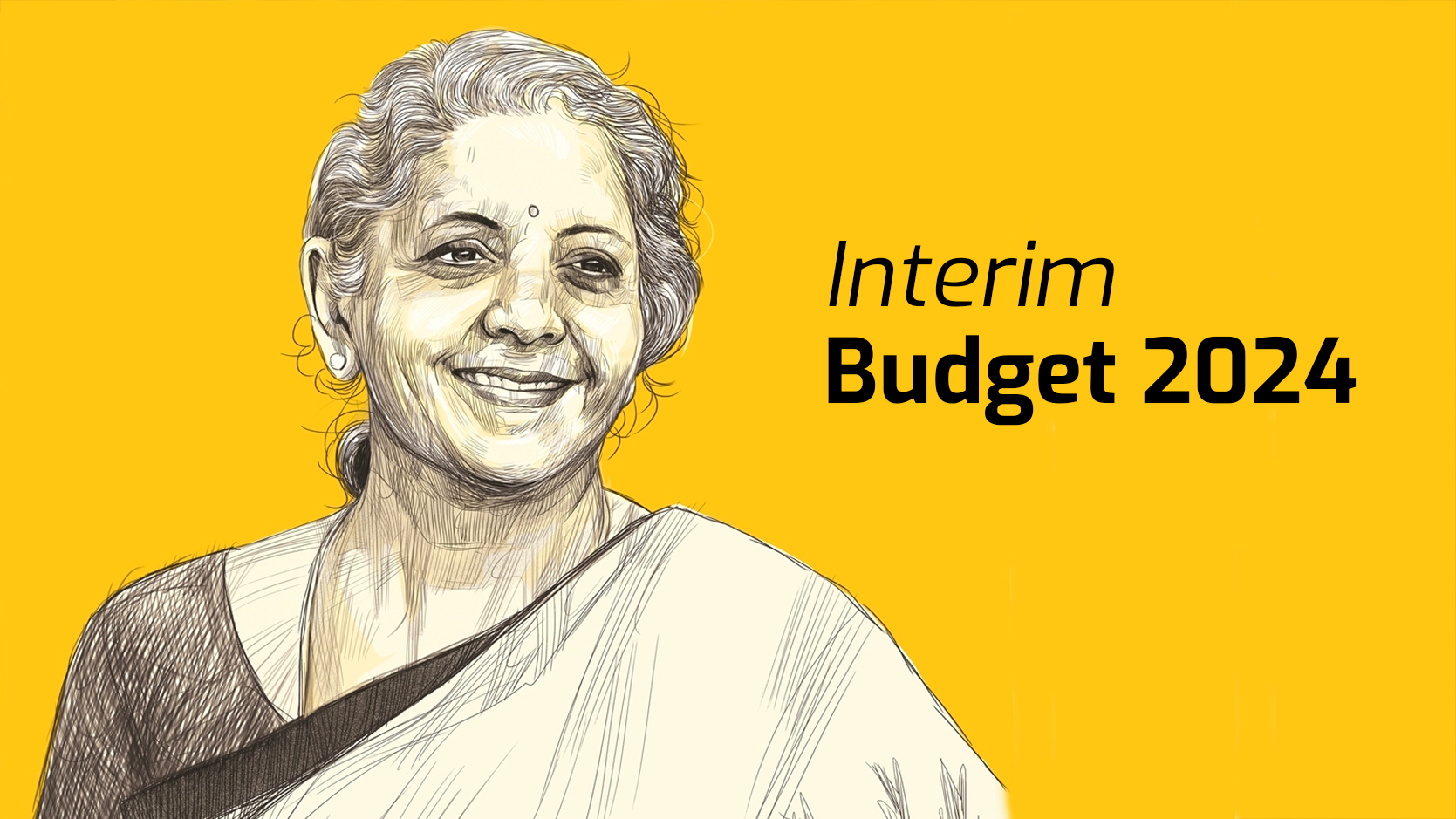Manipur as a case for imposing Article 356
Why in News?
The state of Manipur is currently experiencing extreme sectarian violence, which has led to the breakdown of law and order. This situation warrants the invocation of Article 356 of the Indian Constitution, which allows the President to dissolve the state government and impose President’s Rule when the government of a state cannot be conducted according to the provisions of the Constitution.
Legal Framework: Article 356
Article 356 empowers the President of India to intervene in the governance of a state if it is determined that the government of that state cannot function as per the Constitution. This article does not necessarily require a report from the Governor; the President can act if satisfied that the situation warrants such intervention.
Historical Context and Constitutional Debate
The Constituent Assembly discussions on Article 356 were contentious. B.R. Ambedkar emphasized the need for a provision to maintain the Constitution’s integrity, while H.V. Kamath opposed it, viewing it as a violation of states’ autonomy. Alladi Krishnaswami Ayyar defended the article, stating that the Union government must intervene when a state’s constitutional machinery breaks down.
Why Manipur is Different
The ongoing violence in Manipur is not just the result of insurgency or external threats but also due to ordinary citizens being forced into violence for self-protection. This marks a significant difference from past instances of violence in states like Nagaland or Jammu and Kashmir, where violence was largely perpetrated by insurgent groups or terrorists.
- Presidential Responsibility: The President of India, Droupadi Murmu, has the constitutional duty and power to act decisively. The continuing violence and instability in Manipur make it a unique and urgent case for intervention.
Supreme Court’s Intervention
The Supreme Court of India has been involved in the Manipur violence case. Although the court made efforts to monitor the situation and urged the government to take proactive steps, it found the response to be slow. The court highlighted severe human rights violations, including sexual violence against women, and stressed the need for the government to act decisively to restore law and order.
Violence and Casualties
Between May 3, 2023, and November 11, 2024, over 250 people were killed, and more than one lakh people were displaced in ethnic violence. The situation continues to deteriorate, with ongoing atrocities and destruction. Despite intervention by the Supreme Court, the violence remains unabated.
Necessity for President’s Rule
Given the gravity of the situation, the imposition of Article 356 in Manipur has become increasingly necessary. While the provision has been historically abused in some instances, its invocation in Manipur could be seen as a necessary step to restore peace and governance in the state.
Article 355: Duty of the Union
Article 355 obliges the Union government to assist states in times of crisis, ensuring the security of the state and its citizens. However, despite intervention, the situation in Manipur remains unresolved, indicating a failure of central measures.
No ‘X factor’ — reconciling freedom and accountability
Why in News?
The relationship between freedom of speech and accountability is central to the functioning of democracy. Freedom of speech should not be viewed as a laissez-faire notion, where anything is permissible. Instead, it is a tool that enables democratic discourse while upholding the values of truth and accountability. Recent developments, especially concerning social media platforms like X (formerly Twitter), have highlighted the complexities of balancing free expression with responsibility.
The Guardian’s Exit from X (Twitter)
The Guardian, a prominent British media outlet, made headlines by halting its social media engagement with X in 2023, citing concerns over the toxic content and influence of the platform’s owner, Elon Musk. The media organization issued a statement that raised concerns about the spread of far-right conspiracy theories and racism on X, especially during politically charged events like the U.S. Presidential Election.
This decision is not isolated. National Public Radio (NPR) and PBS in the U.S. had similarly ceased using the platform earlier in 2023, citing concerns about the platform’s management under Musk. These decisions have highlighted the increasing concern among legacy media about the ethical implications of engaging with a platform that has allowed hate speech and misinformation to proliferate unchecked.
The Role of Social Media in Modern Discourse
While traditional media, such as newspapers and public broadcasters, continue to face financial pressures, social media platforms like X offer technology-enabled reach and influence. However, these platforms have come under scrutiny for their role in amplifying misinformation, disinformation, and hate speech.
The argument put forth by Musk and other platform owners about freedom of speech often overlooks the responsibility to curb harmful content. This clash between freedom and accountability is at the heart of current debates on the role of social media in democratic societies.
Issues with Social Media Algorithms and Fake News
Studies have shown that social media algorithms often prioritize engagement over truth, resulting in the widespread dissemination of fake news. Platforms such as X have been criticized for promoting content that is partisan or sensationalist, contributing to societal polarization and eroding trust in the media ecosystem. A key concern is that these platforms often weaponize the idea of freedom of speech, allowing unchecked content that undermines public trust and accountability.
The Center for Countering Digital Hate (CCDH), a prominent watchdog, also quit X in protest of the platform’s toxic environment and the changes to its terms of service that could hinder legal recourse against harmful content.
Legacy Media’s Struggles and the Rise of Social Media
Legacy media, despite its financial challenges, remains an important pillar of democratic accountability. The relationship between a vibrant democracy and credible information is intrinsic. Traditional media outlets are committed to providing evidence-based information that helps citizens make informed decisions.
In contrast, social media platforms often rely on technological manipulations that prioritize engagement over accuracy, thus distorting public discourse. The reliance on social media has led to significant changes in how journalism operates, with platforms like X setting the agenda for mainstream media and influencing the content they produce.
A Study on Social Media’s Influence on Journalism
Research conducted by Julia Cagé, a professor at Sciences Po Paris, has shown how platforms like X influence mainstream media. The study found that journalists’ reliance on these platforms can distort information and that citizens may be better informed in the absence of such platforms. This raises important questions about the impact of social media on both journalism and democracy.
The Need for Accountability
Ultimately, the role of freedom of speech in a democracy should be balanced with accountability. The unchecked spread of misinformation on social media platforms, under the guise of free expression, undermines public discourse. The Guardian’s decision to cease its engagement with X represents a potential first step towards restoring accountability in digital platforms.
End logjam for EPFO pensioners
Why in News?
The Employees’ Provident Fund Organisation (EPFO) has recently announced the successful pilot of the Centralised Pension Payments System (CPPS) under the Employees’ Pension Scheme (EPS), 1995. This new system, effective from January 1, 2024, is set to ease the pension process for future pensioners by allowing them to receive payments from any bank branch in India. While this development is positive for new pensioners, there remain several unresolved issues, particularly concerning higher pension applications, minimum pension revisions, and universal applicability of EPS.
Key Issues in the Current EPFO Pension System
1. Slow Processing of Pension on Higher Wages
- Background: The Supreme Court had approved the principle of pension on higher wages (above the PF ceiling) two years ago. However, as of August 7, 2023, over 1.3 million applications for higher pension payments remain pending.
- Current Status: About 8,400 applications have been processed, while 89,000 applicants were issued demand notices, asking them to transfer the difference in contributions due to the higher salary ceiling.
- Challenges:
- The slow pace of application processing.
- Stringent documentation requirements (e.g., pay slips from up to 25 years ago).
- Conditions for pre-September 2014 retirees being more difficult to meet.
2. Minimum Pension and Wage Ceiling
- Minimum Pension: The minimum pension amount is set at ₹1,000 per month, which employees’ unions have long demanded to increase to ₹9,000.
- Wage Ceiling: The current wage ceiling for EPF contributions is ₹15,000, with trade unions calling for an increase to ₹40,000.
- Concerns:
- The inequity between the growing wages in the economy and the wage ceiling.
- Inflation and rising costs making the current minimum pension insufficient for retirees.
3. Sustainability of the Pension Fund
- Actuarial Deficit: The EPFO faces an actuarial deficit in its pension fund, which could threaten the fund’s long-term sustainability.
- Actuarial Valuation: A 2019 valuation showed a deficit of around ₹9,500 crore (₹25 lakh per person).
- Annual Contributions: Despite concerns over deficit, the EPFO’s annual report (2022-23) revealed no cash flow issues, with contributions rising by ₹13,000 crore over three years.
- Potential Solutions:
- The government could allocate a one-time boost to reinforce the sustainability of the pension fund.
- Consider increasing the contribution rate (currently 12%) from both employees and employers to improve the fund’s long-term viability.
Revised Measures and Solutions for EPFO Pensioners
- Faster Processing of Higher Pension Applications: The EPFO must address the backlog in processing higher pension applications, particularly by simplifying documentation requirements and ensuring quicker approval of pension claims.
- Increase in Minimum Pension: An urgent revision of the minimum pension, raising it to ₹9,000, should be considered to address the rising cost of living and ensure decent living standards for pensioners.
- Raising the Wage Ceiling: A revision of the wage ceiling from ₹15,000 to ₹40,000 will align EPFO contributions with contemporary wage structures and ensure more workers benefit from the pension scheme.
- Strengthening the Pension Fund: The Union Government could consider increasing the contribution to the pension fund, or allocate a one-time budgetary support to ensure its sustainability and avoid future shortfalls.
How can design help a building be more climate-resilient?
Why in News?
As climate change accelerates and urbanization expands, the construction industry faces increasing pressure to build sustainable, energy-efficient, and climate-resilient structures.
Introduction: High-performance buildings (HPBs) are at the forefront of this effort, designed to consume less energy, conserve resources, and withstand unpredictable weather patterns. They represent a critical part of the solution to the challenges posed by global warming, resource depletion, and urban growth.
What Makes a Building Climate-Resilient?
High-performance buildings (HPBs) incorporate a range of features and strategies that make them more energy-efficient, resource-conserving, and climate-resilient. To achieve this, HPBs rely on integrative design processes, sustainable materials, energy-efficient systems, and climate-responsive construction methods. The key factors that contribute to the climate resilience of HPBs include:
1. Integrative Design
The integrative design process is a collaborative approach that involves architects, engineers, building owners, and sustainability experts working together from the earliest stages of design. This process focuses on setting measurable performance goals to optimize building systems and minimize energy use.
Key Elements of Integrative Design:
- Collaboration between various stakeholders (architects, engineers, sustainability consultants, etc.).
- Goal-setting for energy efficiency, thermal comfort, daylighting, and air-conditioning requirements.
- Use of digital modelling to simulate performance outcomes, allowing for testing and adjustment before construction begins.
- Emphasis on passive design strategies, such as maximizing natural light and using materials that retain heat to reduce heating and cooling demand.
2. Sustainable Materials
HPBs prioritize the use of sustainable materials that are durable, energy-efficient, and non-toxic. These materials should have low embodied carbon, which refers to the carbon emissions generated during manufacturing, and high recycled content. Additionally, materials that promote indoor air quality by reducing volatile organic compounds (VOCs) are preferred.
Examples of Sustainable Material Choices:
- Low-Carbon Concrete: Reduces embodied carbon in the construction.
- Recycled Steel and Timber: Utilized for structural components to minimize environmental impact.
- Non-Toxic Paints and Finishes: Improve air quality indoors and reduce the need for frequent maintenance.
For instance, the Indian Institute of Human Settlements (IIHS) campus in Bengaluru is evaluating materials using a life-cycle cost analysis to assess comfort, durability, and energy efficiency over a 50-year period.
3. Energy Efficiency and Reduced Consumption
Buildings are responsible for a significant portion of global energy consumption. To address this, HPBs implement both passive and active strategies to reduce energy usage.
- Passive Strategies: These include optimizing building orientation, using natural light, and utilizing thermal mass to reduce heating and cooling needs.
- Active Strategies: These strategies use high-efficiency HVAC systems, automated lighting controls, and smart sensors to optimize energy use in real-time.
A notable example is the Infosys Hyderabad campus, which incorporates radiant cooling systems and daylighting controls to minimize energy consumption. Additionally, HPBs aim for net-zero energy performance, where the building generates as much or more energy than it consumes, often through solar power or wind energy.
4. Water Conservation
Water scarcity is a growing concern, and HPBs address this by incorporating water-saving technologies and efficient water management practices.
Water Conservation Features in HPBs:
- Low-Flow Fixtures: Faucets and toilets designed to minimize water consumption.
- Rainwater Harvesting: Systems that capture rainwater for non-potable uses such as irrigation.
- Wastewater Recycling: On-site systems that treat greywater for reuse and recycle wastewater for irrigation purposes.
For example, Infosys campuses in India recycle 100% of their wastewater, earning zero-discharge status.
5. Monitoring Performance
Continuous performance monitoring ensures that HPBs operate as efficiently as designed. By tracking energy consumption, water usage, and indoor air quality in real-time, HPBs can identify inefficiencies and adjust operations accordingly.
Examples of Monitoring Systems:
- Smart Sensors: Monitor energy and water usage.
- AI-Controlled Systems: Optimize thermal regulation and adjust building systems to improve comfort and energy efficiency.
- Building Management Systems (BMS): Oversee overall building performance, ensuring it meets sustainability targets.
How Do HPBs Address Climate Risks?
HPBs are built to withstand unpredictable weather events such as extreme heat, heavy rainfall, and floods. Some of the key features that enhance their resilience include:
- Careful Site Selection: Ensuring that buildings are located in areas less prone to climate-related risks.
- Flood Protection: Elevating structures or using flood-resistant materials to protect against rising waters.
- Renewable Energy Systems: Solar panels or wind turbines can provide backup power during outages, ensuring the building remains operational during extreme weather events.
- Passive Survivability: Designing buildings to maintain livable conditions even without power, ensuring occupants’ safety and comfort during emergencies.
For instance, the Infosys Crescent Building in Bengaluru serves around 8,000 people but consumes significantly less energy than typical office buildings, with advanced cooling systems and energy-saving designs that help maintain comfortable temperatures even in extreme heat.
Thai Sacbrood Virus (TSBV)
- Impact: TSBV mainly affects honeybee larvae, leading to colony collapse. While it is less harmful to Western honeybees (Apis mellifera), it is more dangerous for Asiatic honeybees (Apis cerana indica).
- Transmission: The virus is spread by the movement of bee colonies for commercial pollination and honey production.
- Geographical Spread: Outbreaks have been reported in South India (1991-92 and 2021), and in China and Vietnam.
Diabetes in India
- Highest Prevalence: India has the highest number of diabetes cases globally, with 212 million cases, surpassing China (148 million).
- Undiagnosed Cases: India has around 133 million undiagnosed cases in individuals over 30, the highest worldwide.
- Lifestyle Factors: Poor diet (high in carbs and saturated fats) and sedentary lifestyle contribute significantly to the rise in diabetes.
- Tobacco Use: Smoking increases diabetes risk by 30%-40% by impairing insulin production and causing resistance.
- Improved Diagnosis: The use of glycated hemoglobin (HbA1c) tests has improved the identification of diabetes cases, especially in South Asia, compared to earlier single-biomarker methods.
Tuna Export Hub in Andaman and Nicobar Islands
- Objective: India plans to make Andaman and Nicobar Islands a tuna export hub.
- PMMSY: The initiative is part of the development of a Tuna Cluster under the Pradhan Mantri Matsya Sampada Yojana (PMMSY).
Tuna Market Scenario
- Global Tuna Market: Valued at $41.94 billion.
- Indian Ocean: The Indian Ocean is the second-largest tuna-producing region globally, contributing 21% of the world’s tuna production.
- Tuna Species in Andaman and Nicobar Islands: The islands harvest neritic tuna (caught near the shore), and small amounts of oceanic species like skipjack, big-eye, and yellowfin tuna.
India’s First Long-Range Hypersonic Missile
- Successful Test: India successfully tested its first long-range hypersonic missile off the Odisha coast.
- Milestone: This test positions India in a select group of nations with advanced hypersonic weaponry.
Specifications of the Missile:
- Genesis: The missile builds on the Hypersonic Technology Demonstrator Vehicle (HSTDV) programme by DRDO, which successfully tested a Mach 6 scramjet engine in 2019 and 2020.
- Range: Over 1500 km.
- Speed: Mach 6 (six times the speed of sound).
- Mid-Flight Maneuverability: Merges ballistic missile speed with cruise missile-like agility to evade defenses.
- Advanced Tracking: Equipped with multi-domain monitoring systems for accurate targeting.
- Multi-Payload Capability: Can carry both conventional and nuclear warheads.
Applications:
- It is designed for use by the Army, Navy, and Air Force.
- The naval version (in development) is aimed at targeting enemy warships at long distances.
Partnerships for Accelerated Innovation and Research (PAIR) Initiative
- Launched by: The Centre, in alignment with the National Education Policy 2020.
- Objective: To promote and accelerate research in universities, particularly those with potential but limited research experience, by pairing them with top-tier institutions for mentorship and providing significant funding.
- Nodal Ministry: Department of Science and Technology (DST).
- Structure: The initiative follows a hub-and-spoke model:
- Hub Institutions: Top 25 NIRF-ranked institutions and Institutions of National Importance ranked 26-50.
- Spoke Institutions: Central and State Public Universities, selected NITs, and IIITs.
- Funding:
- A maximum of ₹100 crore for each network.
- The funding is split in a 30:70 ratio between hub and spoke institutions.
- For private hub institutions, 25% of the funding must be allocated to spoke institutions.
Ayushman Vay Vandana Card
- Launched under: Ayushman Bharat Pradhan Mantri Jan Arogya Yojana (AB PM-JAY).
- Purpose: Provides free, universal healthcare access to senior citizens aged 70 years and above.
- Eligibility: All Indian citizens aged 70 and above, irrespective of their income or financial status.
- Coverage:
- Provides ₹5 lakh annual health coverage per family.
- If multiple elderly individuals live in the same household, the ₹5 lakh is shared among them.
- Registration: Beneficiaries need to register on the PM-JAY portal or Ayushman app and complete eKYC to activate the card.
- Scheme Integration:
- Beneficiaries of existing health programs (like CGHS, ECHS, and ESIC) can either retain their existing coverage or opt for Ayushman Bharat benefits.
- Also available for individuals with private health insurance.
- Impact: Over 10 lakh senior citizens have enrolled within the first three weeks of the scheme’s rollout (announced in Union Budget 2024-25).





